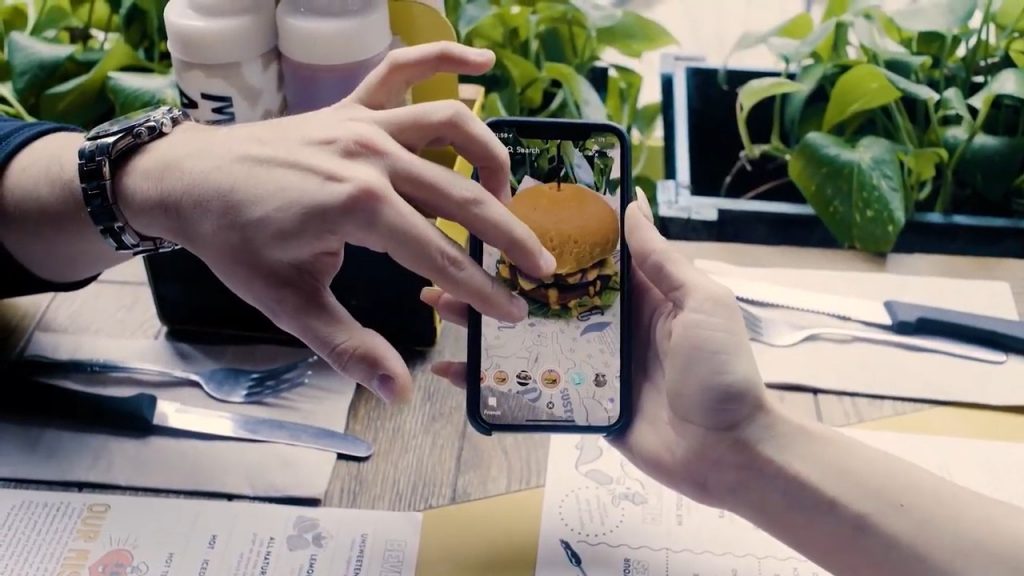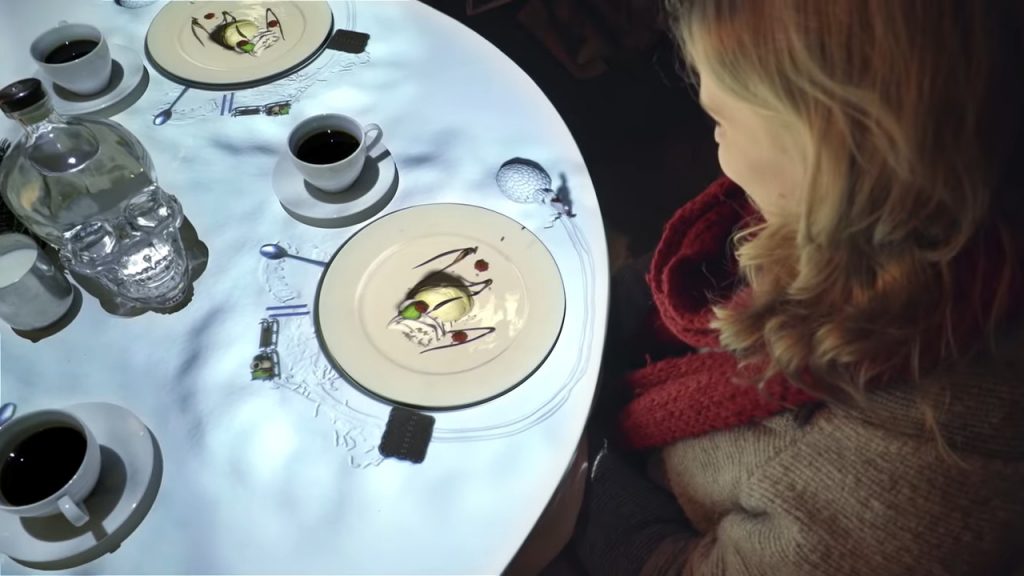The restaurant industry is increasingly using augmented reality to complement and elevate gastronomic experiences. Aside from empowering foreign travelers to order with confidence, AR applications are also reshaping different aspects of the restaurant industry. From the ordering process and employee training to entertainment, AR is changing the world of food for the better.
Virtual 3D Food
All over the world, restaurants are using virtual presentations of their dishes to attract new customers, promote their menu, and upsell other items.
Fast-casual burger chain Bareburger is one example. They partnered with a tech startup called QReal, previously known as Kabaq, to revamp their menu and create an experience unlike any other. QReal’s founder, Alper Guler, discovered the need for AR in the restaurant industry when he went out with friends who weren’t well versed in Turkish cuisine. That’s when he realized the potential for 3D technologies to create a hyper-realistic menu for such guests.

QReal revamped Bareburger’s menu by creating a Snapchat filter that showed customers an immersive virtual experience of their dishes. Diners only have to scan a QR code using Snapchat to see the virtual menu. From there, guests can rotate the augmented menu item and have a good understanding of what the dish looks like.
Having lifelike 3D images of food on the menu will certainly enhance guests’ experience and improve dine-in traffic. However, that’s not the only part of the restaurant business that may benefit from using augmented reality capabilities. Takeout ordering is another. For some people, ordering takeout involves a bit of guesswork. But with AR technologies, consumers might start making better purchase decisions.
Restaurant Entertainment
Niantic’s Pokémon Go proved that people love going on virtual scavenger hunts in real-life locations. Perhaps the restaurant industry can leverage this someday to create new revenue streams for the business.
Table-top tablets and games in a restaurant setup aren’t new. Many do this at casual dining restaurants. Chipotle, for instance, had an app called The Scarecrow, developed to entertain their customers and educate them about how they procure their ingredients. Of course, they gave incentives to guests who completed the levels.
Today, restaurants are using AR to take customer experience to a whole new level. AR helps them elevate the brand experience and educate their consumers about what they stand for. For instance, more than 50 restaurants around the world have installed Skullmapping’s project Le Petit Chef, an AR dining experience that displays 3D projections onto customers’ dining tables. A tiny chef entertains the guest by hauling ingredients around the table and demonstrating how their meals are prepared. This brief immersive experience happens while their actual meals are being cooked in the kitchen. After the presentation, the meals are served.

Employee Training
Like any other industry, restaurants may use augmented reality to train employees efficiently and effectively. AR-driven training programs enable employees to merge theory and applications. Using AR-enabled devices, employees can view their training material and put it into action. This makes the learning curve both smoother and shorter.
Embracing augmented reality will help brands cut some training costs and focus on delivering the best quality training possible.
Augmented reality is going to change the way we perceive restaurants. As the world becomes more comfortable with the technology, we should see more people demanding it in their favorite restaurants.
There’s so much to do and explore before AR can take over restaurants. For now, all we can do is wait and hope for tech-savvy restaurateurs to embrace this technology.




